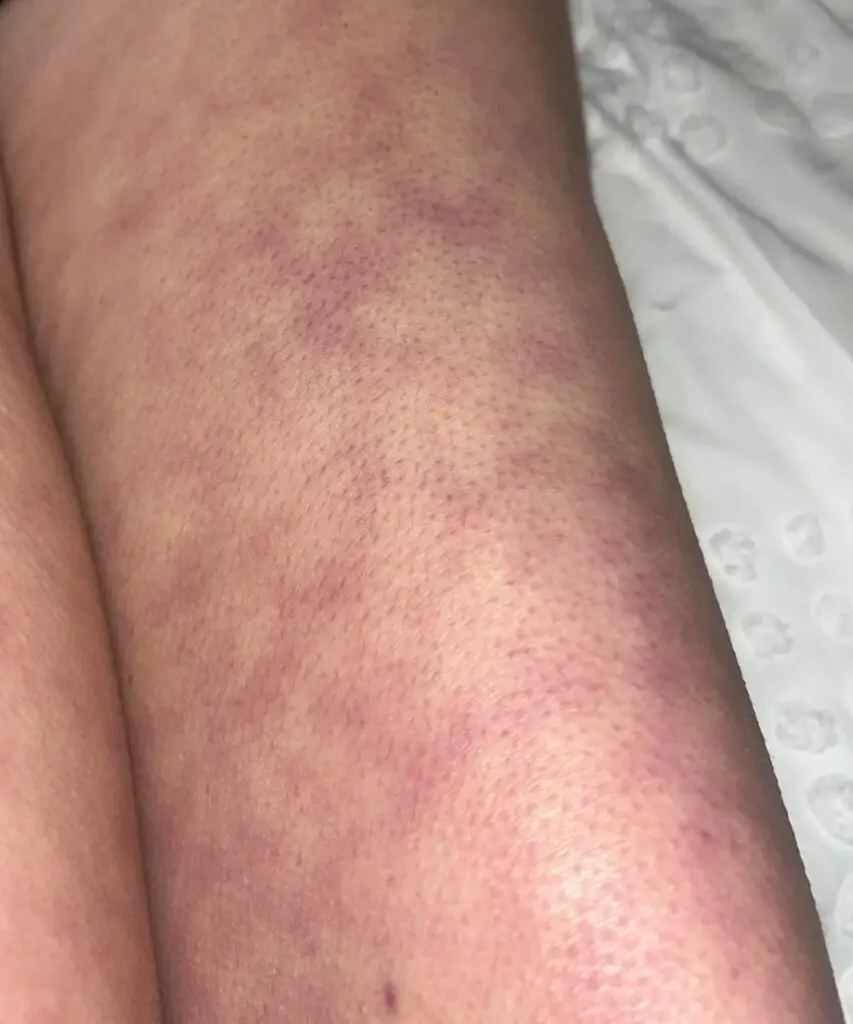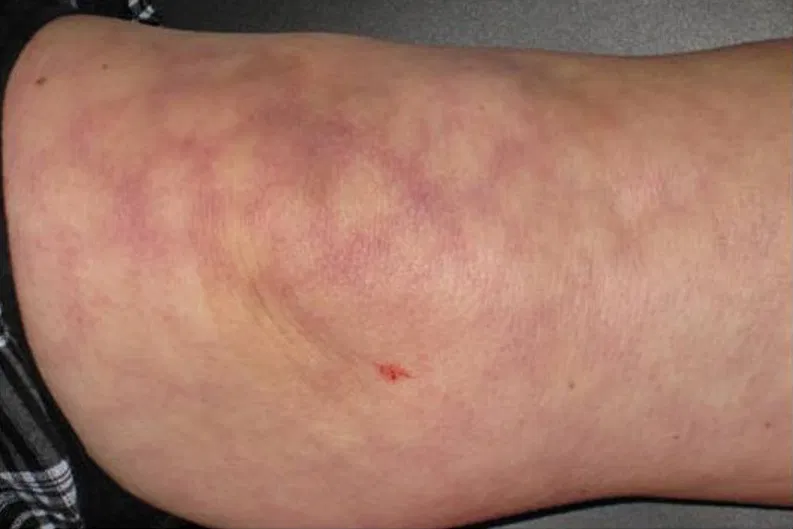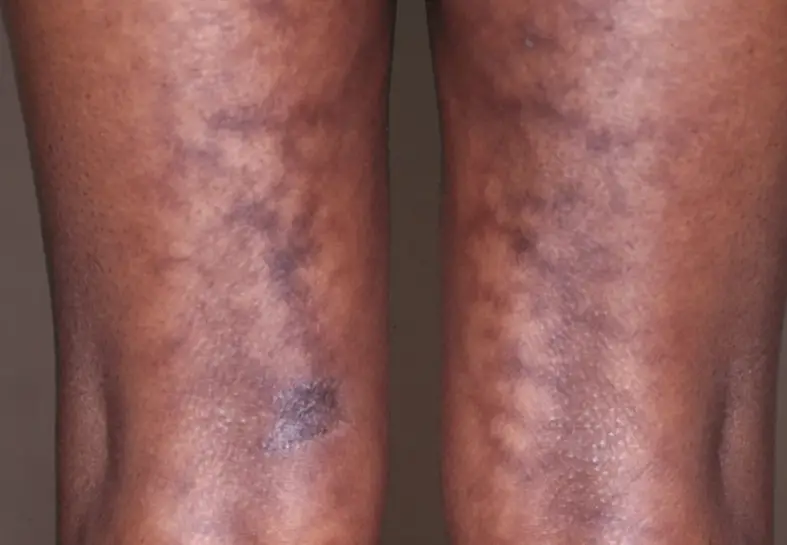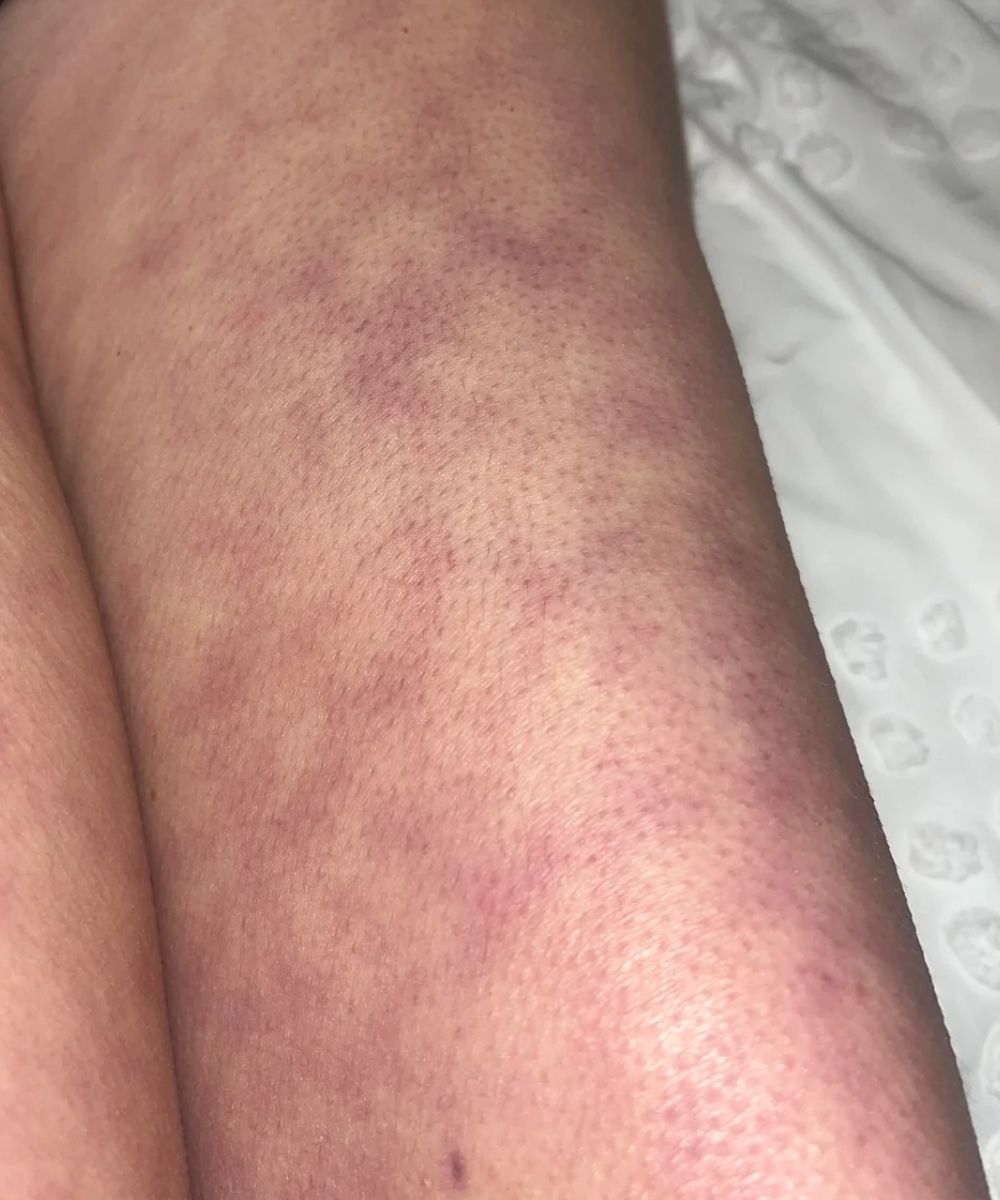According to dermatologist Dr. Joseph Jorizzo of Wake Forest University, “your skin can be a window to your underlying health.” Indeed, the skin isn’t just a protective barrier — it’s a messenger, often revealing what’s happening inside the body before any other symptom appears.
Changes in skin texture, color, or pattern can sometimes be harmless reactions to temperature or stress, but in other cases, they may hint at something deeper. One of the most intriguing examples is a condition called livedo reticularis, often referred to as mottled skin.
When the Skin Speaks in Patterns

Livedo reticularis (LR) appears as a purplish, net-like or lace-patterned discoloration, most commonly on the legs or arms. The pattern results from interrupted or uneven blood flow close to the skin’s surface. In many cases, it’s simply a temporary reaction to cold or emotional stress — but occasionally, it can signal an underlying health issue.
This condition is seen more often in women between the ages of 20 and 50, as well as in newborns whose circulation is still developing. The discoloration tends to intensify in cold weather and fade as the skin warms up.
Why It Happens
Mottled skin forms when small blood vessels constrict or spasm, causing uneven oxygen delivery. It can be triggered by:
-
Cold temperatures (a natural vascular response)
-
Stress or anxiety, which affect circulation
-
Certain medications, such as amantadine (used for Parkinson’s disease and multiple sclerosis)
-
Underlying conditions, including lupus, thyroid disorders, or rheumatoid arthritis
According to Verywell Health, livedo reticularis can also appear in severe cases of antiphospholipid syndrome, pancreatitis, or autoimmune disease, and occasionally in people approaching the end of life due to changes in blood flow.
Two Main Types

There are two broad categories of livedo reticularis:
-
Primary (Physiological) LR: A benign, short-term condition caused by exposure to cold. It’s most common in children and young adults and typically fades when warmth returns.
-
Secondary (Pathological) LR: More persistent and often connected to an underlying health problem such as vascular inflammation, autoimmune disease, or blood clotting disorders.
In rare cases, the pattern may point to Sneddon’s syndrome, a condition that links livedo reticularis with an increased risk of stroke, or to polyarteritis nodosa, an inflammation of medium-sized arteries.
What You Can Do
For primary LR, no medical treatment is necessary — it usually disappears once the body warms up. Keeping warm and avoiding sudden temperature changes can prevent flare-ups.
For secondary LR, doctors may recommend:
-
Anticoagulants to prevent blood clots
-
Corticosteroids to reduce inflammation
-
Medications to improve circulation
Lifestyle adjustments can also help, such as quitting smoking, exercising regularly, and managing blood pressure and cholesterol levels.
When to See a Doctor

You should seek medical attention if:
-
The discoloration doesn’t fade with warmth.
-
It appears suddenly or spreads rapidly.
-
It’s accompanied by pain, ulcers, or numbness.
Persistent or painful livedo reticularis deserves a closer look from a healthcare professional, as it can sometimes be an early clue to more serious vascular or autoimmune conditions.
The Bottom Line
Most of the time, these striking skin patterns are harmless and temporary, a simple response to the cold. But when they linger or appear without clear reason, they remind us that the skin can reveal far more than meets the eye.
It’s your body’s way of speaking — and sometimes, it’s worth listening closely.
Disclaimer: This article is for informational purposes only and is not a substitute for professional medical advice, diagnosis, or treatment. Always seek the guidance of your healthcare provider with any questions you may have about a medical condition.
Sources:
-
Cleveland Clinic – Skin Discoloration and Circulation Issues
-
American Academy of Dermatology – Circulatory Skin Conditions

